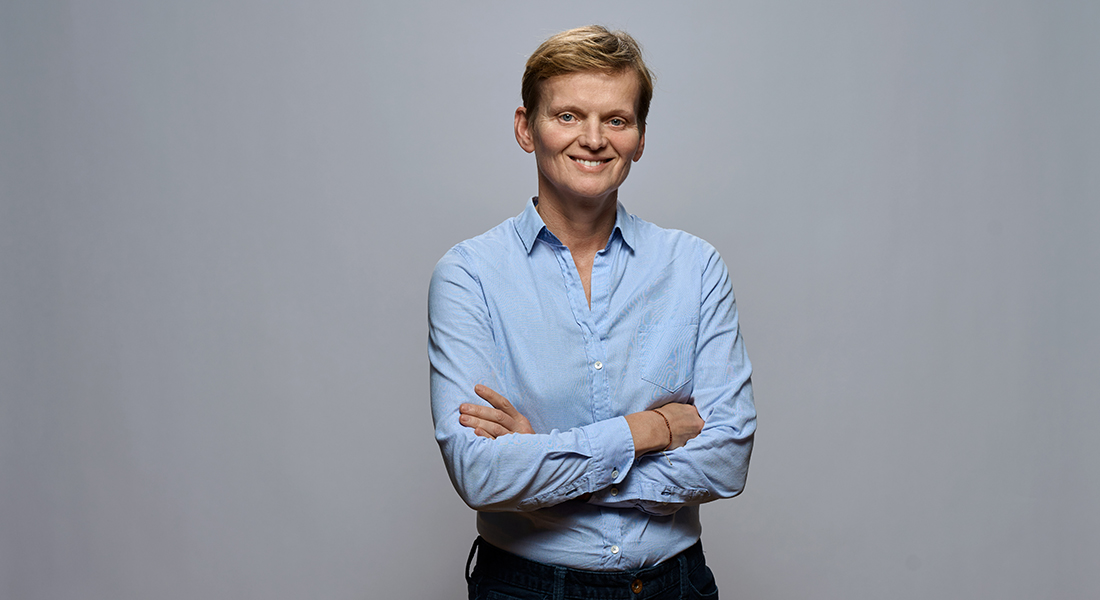Professor Ruth Loos awarded Obesity Prize for Excellence
Professor Ruth Loos is the first recipient of the new Obesity Prize for Excellence established by the European Association for the Study of Obesity (EASO) and the Novo Nordisk Foundation. The Prize is accompanied by DKK 2 million.

In January 2023, the European Association for the Study of Obesity (EASO) and the Novo Nordisk Foundation announced that they were establishing a new Obesity Prize for Excellence for an agenda-setting researcher within obesity. They have now selected the first recipient.
The Prize has been awarded to CBMR's Vice Executive Director Professor Ruth Loos for her outstanding contribution to understanding the genetic component associated with the development of obesity.
The Prize is accompanied by DKK 2 million, of which DKK 300,000 is a personal award and DKK 1.7 million for research.
“I am delighted that Ruth Loos is receiving this prestigious Prize. Her research on the effects of genetic and non-genetic factors in developing obesity is groundbreaking for understanding the physiology behind weight gain and developing obesity. In addition, she has used the results of her research to make key recommendations on the commercial use of genetic tests to determine people’s risk of developing obesity. I hope that this Prize will encourage her to continue this promising work,” says Arne Astrup, MD, Professor and Senior Vice President, Obesity and Nutritional Sciences, Novo Nordisk Foundation.
Identified the first gene associated with the risk of obesity
Ruth Loos’ work is extensive; already in 2007, she helped to identify the first locus on the human genome that could be associated with an increased risk of developing obesity.
This work paved the way for identifying the second locus on the genome related to the risk of developing obesity, and since then she has been the leading force in the Genetic Investigation of Anthropometric Traits (GIANT) consortium, which has identified more than 1,500 loci in the human genome associated with body mass index (BMI).
This research has shown that genes that influence the brain comprise a major component of the genetic risk for developing obesity.
“The research has required extensive collaboration between researchers in many fields because it requires more than just knowing which genes are associated with the risk of developing obesity. It also requires knowing which proteins or hormones the genes express and how they thereby affect our biology. One reason I moved my research to Denmark was because my office is next to some of the world’s most talented researchers in translational biology,” explains Ruth Loos.
Obesity originates early in life
However, mapping the many genetic variants that can affect a person’s BMI has also clearly shown that genes do not solely determine whether people develop obesity or not. Environment also plays a crucial role.
Much of Ruth Loos’ current research therefore comprises understanding how genetics is linked with environment in determining BMI. She and her colleagues initiated one of the most in-depth mappings ever of the genetics and metabolism of 10,000 people not only to determine why they have the BMI they do but also to learn more about their risk for developing such diseases as metabolic and cardiovascular diseases.
The researchers will follow the participants for 25 years, but the researchers will already learn more about why people look the way they do in the early phases of the study.
The Prize awarded by EASO and the Foundation is accompanied by DKK 1.7 million for research, and Ruth Loos has already earmarked the funds for a project in which she and colleagues will genetically map 16,000 children and their mothers with the aim of discovering whether the proteins expressed in their blood can be used to predict who will develop obesity later in life, similar to the genetic component of obesity.
“Obesity starts early in life, so predicting who will develop obesity requires examining children. When children are 2–8 years old, they are already stuck in a weight curve that is difficult to escape. It is therefore important if we can discover which genes and proteins determine the weight curve children will follow throughout life before they reach these ages to investigate opportunities for intervening,” says Ruth Loos.
Contact
Strategic Communication Officer Peter Andrew Stanners
+45 93 50 94 59
peter.stanners@sund.ku.dk
